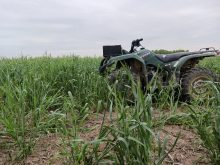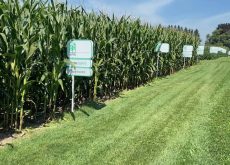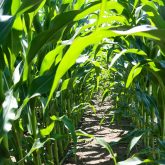Mid- to late-fall on the farm is often fraught with too many jobs, but taking time to assess winter wheat stands can augment the bottom line by diagnosing issues that may have occurred at planting.
According to Joanna Follings, cereals specialist with the Ontario Ministry of Agriculture, Food and Rural Affairs, anyone can learn to do a stand assessment.
Why it matters: Assessing wheat stands before winter can give growers an edge on how to manage the crop in spring.
Read Also

The forced Japanese-Canadian farmers of the Second World War
Manitoba’s sugar beet farms drew on displaced Japanese-Canadians from B.C. during the Second World War
“It’s a great way to get out and see what’s going on and really know how accurate seeding was and how the crop is progressing before winter,” she says.
“If it’s the first time doing an assessment, having an agronomist or CCA (certified crop advisor) with you to walk you through the process is a great way to build that relationship and discuss ways to manage the crop going forward.”
There’s a variety of on-line videos from different sources, including Agri Co-op and C&M Seeds, that can also help.
When to assess?
The best time to conduct a fall stand assessment is once all seedlings have fully emerged because it’s easier to distinguish individual plants and make stand counts to determine seeding rate accuracy. If soil conditions were dry at planting, emergence could be delayed.
Stand uniformity and planting depth are the key factors being assessed: fall is not the time to determine whether to keep a stand.
“Uniformity of the stand should be noted as it may have implications for timing of crop protection products next spring,” says Follings.

“Any poor residue spread patterns in the field should also be noted and addressed in future years, if possible. If seedlings appear to be stressed or discoloured, they should be investigated further to determine if there’s the presence of barley yellow dwarf virus (BYDV) or other seedling diseases.”
Assessments well after emergence but before snowfall provide a glimpse of the growth stage of the crop going into winter. Ideally, winter wheat will have had sufficient growing degree days to develop tillers and a well-developed root system to improve winter survival and optimize yield potential.
For those on 7.5-inch rows, Follings has a table indicating seeding rate (seeds per acre) with plants per foot of row as a guideline (see table above).
More to learn
For Peter Johnson, the fall stand assessment is also an opportunity to check on weed pressure. Growers can decide at that point whether to apply herbicide. On very sandy or muck soils, manganese deficiency is something to watch for as the plants grow past three leaves.
“On very deficient soils, a manganese application in the fall may be warranted,” says Johnson, an independent consultant.
“Deficient plants do not overwinter well. This is rare and you don’t need to include it, but it is the only nutrient we would worry about in the fall.”

More insight
Recent work by Emma Dieleman, Dave Hooker and Josh Nasielski at the University of Guelph’s Ridgetown Campus reinforces the benefit of early planting and targeting the optimum planting date window (see map above). Their research showed that early planting increases the number of productive heads. Early-planted wheat averaged 284 to 383 heads per square metre.
Although management strategies such as increased seeding rates can reduce the impact of late-planting, maximum yields are achieved when winter wheat is planted at the optimum time.
“The planting date window for a given region takes into consideration the risks such as snow mould and BYDV,” says Follings.
“At these dates, the benefits of increased yield far outweigh any risks.”
Johnson adds that on heavy clay soils, waiting to plant could mean failure to plant if it begins to rain.
“If rain is imminent, I advise growers to seed even more before the optimum date if they’re on really tough clay,” he says. “If you do seed early, manage your seeding date by reducing your seeding rate.”
















